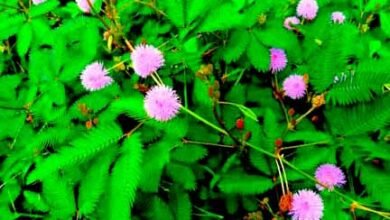
लवांग या लौंग…
भारतीय खान-पान में कई मसालों का प्रयोग किया जाता है. ये मसाले सिर्फ मसालें ही नहीं आयुर्वेदिक औषधि भी होते है. इस मसाले का नाम है लौंग या लवांग. जिसे अंग्रेजी में Cloves (क्लोव), संस्कृत / मलयालम / तमिल में ‘पिप्पलि’ के नाम से जाना जाता है. बताते चलें कि लौंग को अंग्रेजी में Cloves (क्लोव) कहा जाता है. यह अंग्रेजी पर्यायवाची शब्द है जो लैटिन शब्द क्लैवस (clavus) से निकला है.
लौंग का लैटिन नाम ‘पिपर’ (Piper) है. लौंग का वानस्पतिक नाम है Syzygium aromaticum. यह मटेंसी कुल (Myrtaceae) के ‘यूजीनिया कैरियोफ़ाइलेटा’ (Eugenia caryophyllata) नामक मध्यम कद वाले सदाबहार वृक्ष की सूखी हुई पुष्प कलिका है. लौंग एक प्रकार का मसाला है जिसका प्रयोग पूजा-पाठ, भरतीय पकवानों, दाँत का मंजन, साबुन, इत्र वेनिला एवं दवा के रूप में इस तेल का उपयोग होता है. लौंग के फल एवं फूल के डंठल का भी कभी कभी उपयोग किया जाता है.
बताते चलें कि, चीन में लौंग का उपयोग ईसा से तीन शताब्दी पूर्व से होता चला आ रहा है तथा रोमन लोग भी इससे अच्छी तरह परिचित थे, किंतु यूरोपीय देशों में इसकी जानकारी 16वीं शताब्दी में तब हुई जब पुर्तगाली लोगों ने मलैका द्वीप में इसे खोज निकाला. वर्षों तक इसके वाणिज्य पर पुर्तगालियों एवं डचों का एकछत्र आधिपत्य रहा. अठारहवीं शताब्दी में ब्रिटेन में लौंग का मूल्य उसके वजन के सोने के बराबर हुआ करता था.
लौंग नम कटिबंधों के एक सदाबहार पेड़ है. यह तटीय रेतीले इलाके में छोड़कर देश के सभी क्षेत्रों में उगाया जाता है. लेकिन केरल के लाल मिट्टी और पश्चिमी घाट के पर्वतीय इलाकों में इसकी खेती के लिए सबसे उपयुक्त जगह मानी जाती है. रिच, नम कटिबंधों के बलुई मिट्टी लौंग पेड़ों की व्यावसायिक खेती के लिए आदर्श मिट्टी मानी जाती हैं.
लौंग, मलैका का देशज है, किंतु अब सारे उष्णकटिबंधी प्रदेशों में भी बहुतायत पाया जाता हैं. जंजीबार में समस्त उत्पादन का 90 प्रतिशत लौंग पैदा होता है, जिसका बहुत सा भाग बंबई से होकर बाहर भेजा जाता है. सुमात्रा, जमैका, ब्राजील, पेबा एवं वेस्ट इंडीज़ में भी पर्याप्त लौंग उपजाया जाता है. वर्तमान समय में ‘जंजीबार’ लौंग का सबसे अधिक उत्पादन करने वाला देश है. लौंग का अधिक मात्रा में उत्पादन जंजीबार और मलाक्का द्वीप में होता है. इसका उपयोग भारत और चीन में 2000 वर्षों से भी अधिक समय से हो रहा है. लौंग का उत्पादन मुख्य रूप से इंडोनेशिया, मेडागास्कर, भारत, पाकिस्तान, श्रीलंका आदि देशों में होता है.
लौंग को सर्दियों में इस्तेमाल करने पर काफी फायदेमंद होता है चूँकि, इसकी तासीर गर्म होती है. लौंग का स्वाद थोड़ा कड़वा जरूर होता है. लौंग में कार्बोहाइड्रेट, नमी, प्रोटीन, वाष्पशील तेल, गैर-वाष्पशील ईथर निचोड़, रेशा के अलावा खनिज पदार्थ, हाइड्रोक्लोरिक एसिड में न घुलने वाली राख, कैल्शियम, फास्फोरस, लोहा, सोडियम, पोटेशियम, थायामाइन, राइबोफ्लेविन, नियासिन, विटामिन ‘सी’ और ‘ए’ जैसे तत्व भी लौंग में प्रचुर मात्रा में पाए जाते हैं.
लौंग तीखा, लघु, आंखों के लिए लाभकारी, शीतल, पाचनशक्तिवर्द्धक, पाचक और रुचिकारक होता है. वही, यूनानी चिकित्सा पद्धति के अनुसार लौंग खुश्क, उत्तेजक और गर्म होता है. शोधकर्ताओं के अनुसार, भारतीय मसालों में लौंग सबसे अच्छा एंटी ओक्सिडेंट होता है. भोजन में प्राकृतिक एंटी ऑक्सीमडेंट का इस्तेमाल करना स्वास्थ के लिए उत्तम होता है. यह कृत्रिम एंटी ऑक्सीपडेंट से ज्यादा बेहतर और अच्छा माना जाता है.
आमतौर पर लौंग दो प्रकार के होते हैं. एक काले रंग की एवं दूसरी नीले रंग की. आमतौर पर घरों में मसाले के तौर पर इस्तेमाल होने वाला लौंग काले रंग का होता है. नीले रंग का लौंग अत्याधिक तैलीय होता है. नीले रंग के लौंग को मशीन द्वारा तेल निकाला जाता है जिनका उपयोग चिकित्सा में किया जाता है. इसके पत्ते को भी मसाले के तौर पर इस्तेमाल किया जाता हैं. लवंग एक खुशबूदार मसाला होता है.
अच्छे लौंग की पहचान है उसकी खुशबू एवं तैलीयपन होता है. लौंग ख़रीदते समय उसे दातों में दबाकर देखना चाहिए. इससे लौंग की गुणवत्ता पता चल जाती है. अगर लौंग में तेज सुगन्ध, स्वाद में तीखी हो और दबाने में तेल का आभास हो तो उसी लौंग को अच्छा मानना चाहिए. अक्सर व्यापारी तेल निकाला हुआ लौंग मिला देते है. तेल निकाला हुआ लौंग की पहचान होती है ‘लौंग’ में झुर्रिया पड़ी हो.
नुक्सान: –
किसी भी वस्तु को अधिक उपयोग करने से कई प्रकार की समस्यायों से रूबरू होना पड़ता है. उसी प्रकार लौंग का अधिक सेवन से कई प्रकार की बीमारियों का सामना करना पड़ता है जैसे…
गुर्दे और आंत संबंधी समस्या, रक्त का पतला होना, जलन, खुजली, एलर्जी एवं कामोत्तेजना पर नकारात्मक प्रभाव पड़ता है.
========== ========= ===========
Lavang or laung…

Many spices are used in Indian food. These spices are not only spices but also Ayurvedic medicines. The name of this spice is clove or lavaang. Which is known as Cloves in English and ‘Pippali’ in Sanskrit/Malayalam/Tamil. Let us tell you that cloves are called cloves in English. This is an English synonym which is derived from the Latin word clavus.
the Latin name of clove is ‘Piper’. The botanical name of clove is Syzygium aromaticum. This is the dried flower bud of a medium-height evergreen tree named ‘Eugenia caryophyllata’ of the Myrtaceae family. Clove is a type of spice that is used in worship, Indian dishes, toothpaste, soap, perfume, and vanilla and this oil is used as medicine. Clove fruits and flower stalks are also sometimes used.
Let us tell you that cloves have been in use in China since three centuries before Christ and the Romans were also well acquainted with it, but it became known in European countries in the 16th century when the Portuguese discovered it in the island of Malacca. Removed. For years, its commerce remained under the sole dominance of the Portuguese and Dutch. In eighteenth century Britain, the value of cloves was equal to its weight in gold.
Clove is an evergreen tree of humid tropics. It is grown in all areas of the country except the coastal sandy areas. But the red soil of Kerala and the mountainous areas of the Western Ghats are considered the most suitable place for its cultivation. Rich, moist sandy soils of the tropics are considered ideal soils for commercial cultivation of clove trees.
Clove is native to Malacca, but is now found in abundance in all tropical regions. 90 percent of the total clove production is produced in Zanzibar, a large part of which is exported through Bombay. Adequate cloves are also grown in Sumatra, Jamaica, Brazil, Cuba and West Indies. At present ‘Zanzibar’ is the largest producer of cloves. Cloves are produced in large quantities in Zanzibar and Malacca Island. It has been in use in India and China for more than 2000 years. Cloves are mainly produced in countries like Indonesia, Madagascar, India, Pakistan, Sri Lanka etc.
Clove is very beneficial when used in winter because it has a warming effect. The taste of cloves is definitely a little bitter. Cloves contain carbohydrates, moisture, protein, volatile oil, non-volatile ether extract, minerals other than fibre, ash insoluble in hydrochloric acid, calcium, phosphorus, iron, sodium, potassium, thiamine, riboflavin, niacin, vitamin C. Elements like ‘A’ and ‘A’ are also found in abundance in cloves.
Cloves are pungent, small, beneficial for the eyes, cooling, digestive, digestive and appetizing. Similarly, according to Unani system of medicine, clove is dry, stimulating and hot. According to researchers, clove is the best anti-oxidant among Indian spices. Using natural anti-oxidants in food is good for health. It is considered better and better than artificial anti-oxidants.
Generally there are two types of cloves. One is black and the other is blue. The cloves generally used as a spice in homes are black in colour. Blue colored cloves are very oily. Oil is extracted from blue cloves by machine which is used in medicine. Its leaves are also used as a spice. Clove is an aromatic spice.
The identity of a good clove is its fragrance and oiliness. While buying cloves, one should press them between the teeth and examine them. By this the quality of cloves can be known. If the clove has a strong aroma, pungent taste and feels oily when pressed, then that clove should be considered good. Often traders add oil extracted cloves. Oil extracted cloves can be identified by the cloves having wrinkles.
Disadvantages: –
Excessive use of any item leads to many types of problems. Similarly, excessive consumption of cloves leads to many diseases like…
Kidney and intestinal problems, thinning of blood, burning sensation, itching, allergies and sexual arousal are negatively affected.





